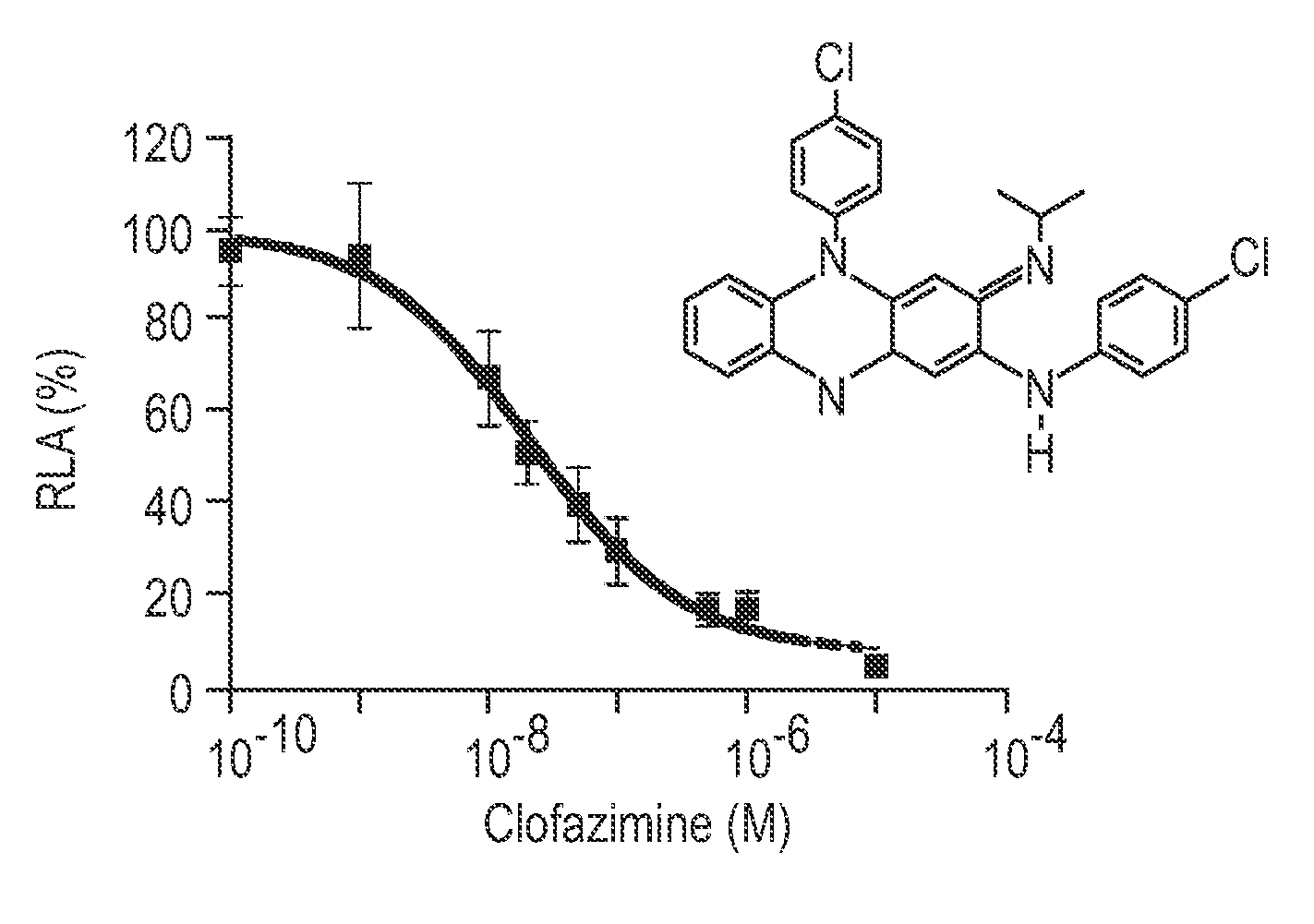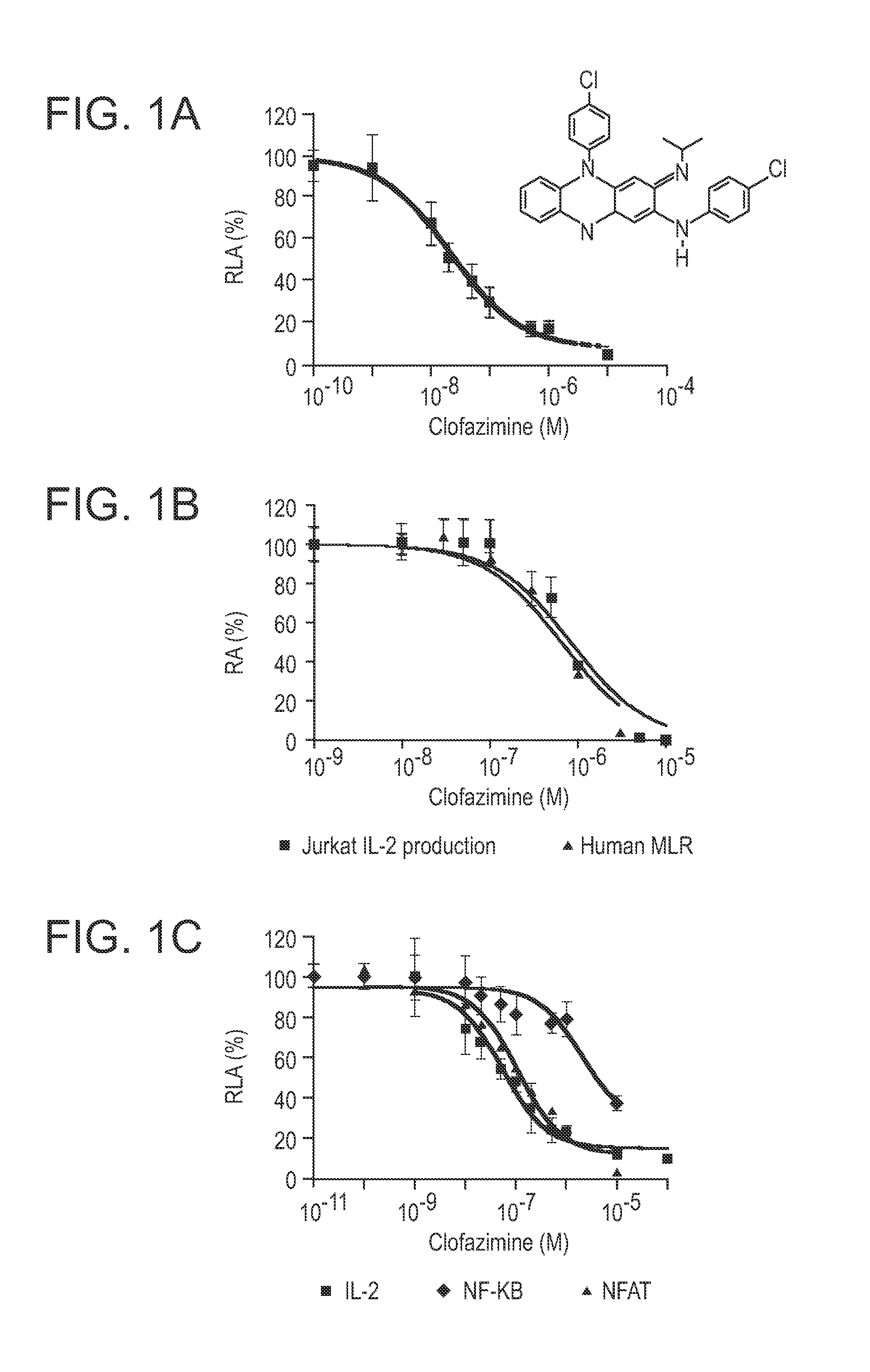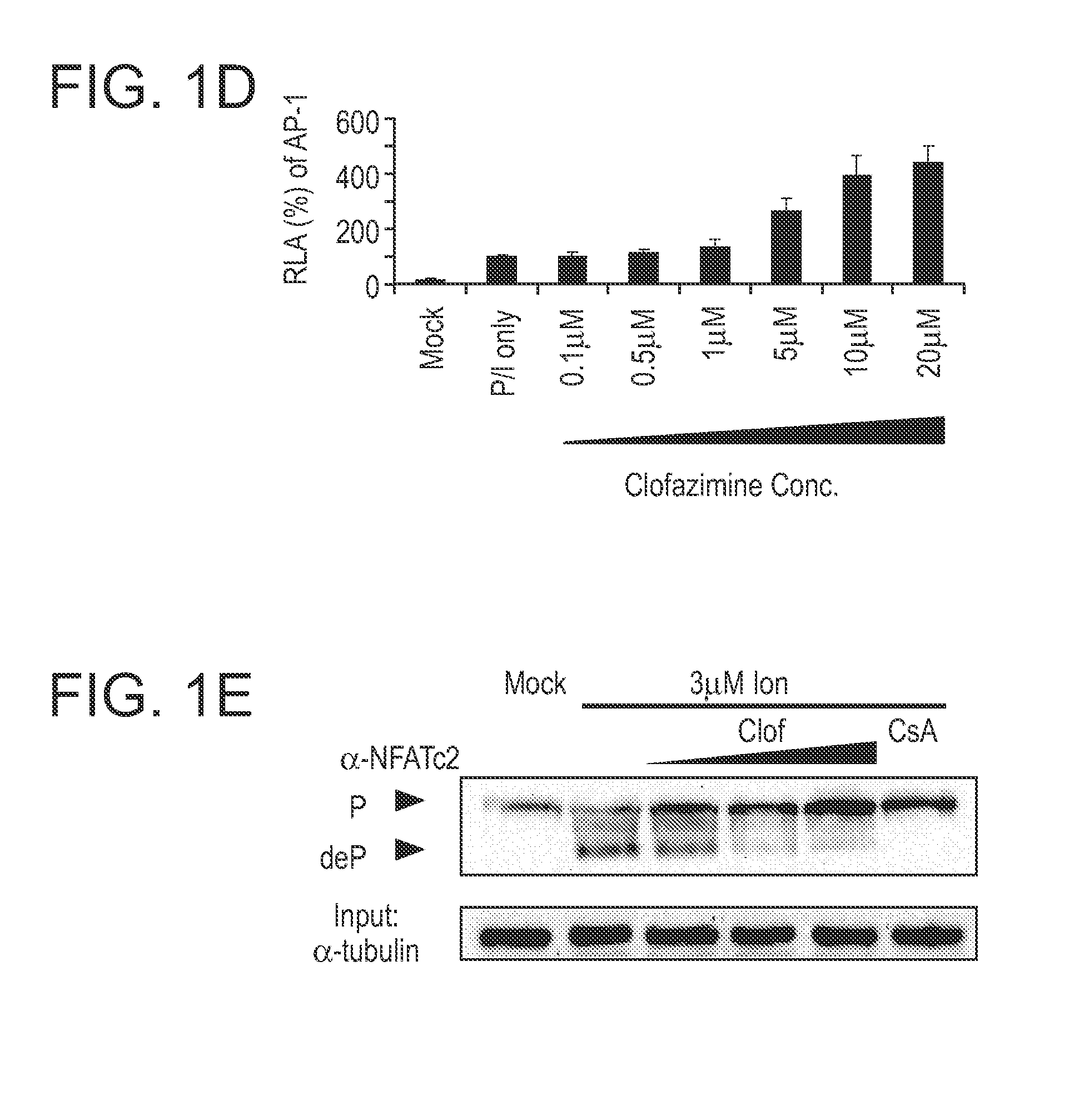Phenazine derivatives and uses thereof
a technology of phenazine and derivatives, applied in the field of phenazine derivatives, can solve the problems of affecting the quality of life of sufferers, death if left unchecked, unacceptable adverse event profiles, etc., and achieves the effects of reducing the activity of isolated pathogenic t cells, effective in preventing death and in treatment, and reducing the activity of isolated pathogenic cells
- Summary
- Abstract
- Description
- Claims
- Application Information
AI Technical Summary
Benefits of technology
Problems solved by technology
Method used
Image
Examples
example 1
Assay Methods and Results
Cell Culture and IL2-Luciferase Reporter Cell Line
[0251]Jurkat E6.1 (ATCC TIB152) T-cells were maintained in RPMI medium 1640 (Invitrogen) supplemented with 10% FBS, 2 mM-L-glutamine, penicillin (50 μg / ml) and streptomycin (50 μg / ml). HFF-1 (ATCC SCRC 1041) fibroblasts were maintained in low glucose DMEM (Invitrogen) supplemented with 10% FBS, 2 mM-L-glutamine, penicillin (50 μg / ml) and streptomycin (50 μg / ml). Jurkat E6.1 cells were transfected with linearized pIL2-Luc-Neo and linearized pMEP4 by electroporation, followed by selection for resistance to 400 μg / ml hygromycin. The stably transfected IL-2 reporter cell line, Jurkat / IL-2Luc, was maintained in hygromycin, which was omitted from medium for the screening and other assays.
[0252]Jurkat / IL-2Luc cells were seeded in 96 well plates (Nunc 136102) at 2×105 (180 μL) per well. Cells were incubated with 10 μM (final concentration) drugs from the library for 1 h before they were stimulated with...
example 2
shRNA Lentivirus Production
[0270]The targeting sequence of sh Kv1.3-4 is 5′-GCCACCTTCTCGCGAAACAT-3′. Recombinant lentiviruses were generated using a three-plasmid system described (Pan et al. 2004. J. Biol. Chem. 279:14477). Virus was harvested and concentrated (1:50) 2 days after transfection. Jurkat T-cells were transduced by concentrated virus at a ratio of 5×106 cells / 150 μl virus. Cells were cultured for two days before they were harvested for Western blot analysis and other experiments.
example 3
Human Mixed Lymphocyte Reaction (MLR)
[0271]The human MLR was established by coculturing normal human PBMN responder lymphocytes (0.5×106) with an equal number of miomycin C-treated stimulator cells in RPMI1640 complete medium. The cells were incubated with varying doses of clofazimine at 37° C. in a humidified atmosphere of 5% CO2 for 4 days. Then 1 μCi of [3H]-thymidine was added into culture and incubation was continued for 6 h. The cells were harvested and [3H]-thymidine incorporated into cells was measured in a liquid scintillation counter.
PUM
| Property | Measurement | Unit |
|---|---|---|
| temperature | aaaaa | aaaaa |
| weight-average molecular weight | aaaaa | aaaaa |
| particle sizes | aaaaa | aaaaa |
Abstract
Description
Claims
Application Information
 Login to View More
Login to View More - R&D
- Intellectual Property
- Life Sciences
- Materials
- Tech Scout
- Unparalleled Data Quality
- Higher Quality Content
- 60% Fewer Hallucinations
Browse by: Latest US Patents, China's latest patents, Technical Efficacy Thesaurus, Application Domain, Technology Topic, Popular Technical Reports.
© 2025 PatSnap. All rights reserved.Legal|Privacy policy|Modern Slavery Act Transparency Statement|Sitemap|About US| Contact US: help@patsnap.com



